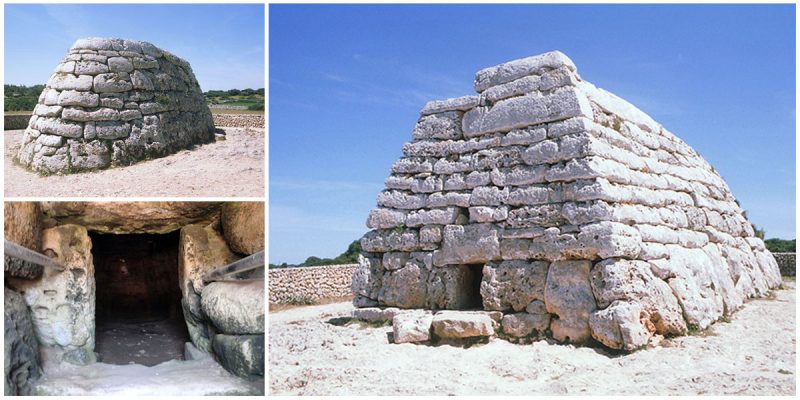The most remarkable megalithic chamber tomb in the Balearic island of Minorca, Spain, the Naveta d’Es Tudons is a Bronze Age structure from the pre-Talaiot period that served as collective ossuary between 1200 and 750 BC.
It consists of 2 chambers: an ossuary and an altar room for funeral offerings. Its floor plan has an elongated horseshoe shape and access is by 2 doors.
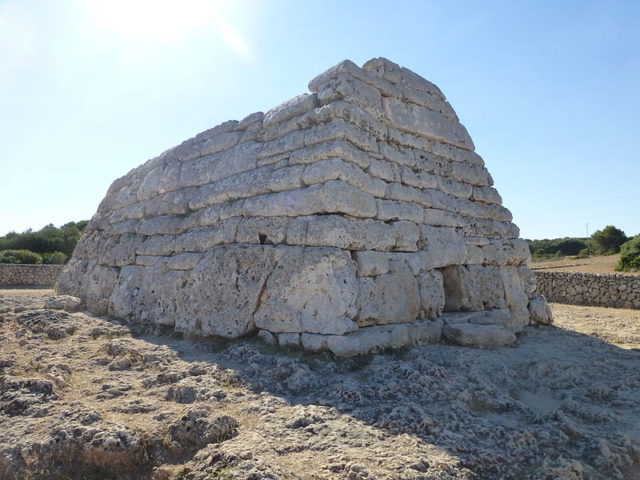
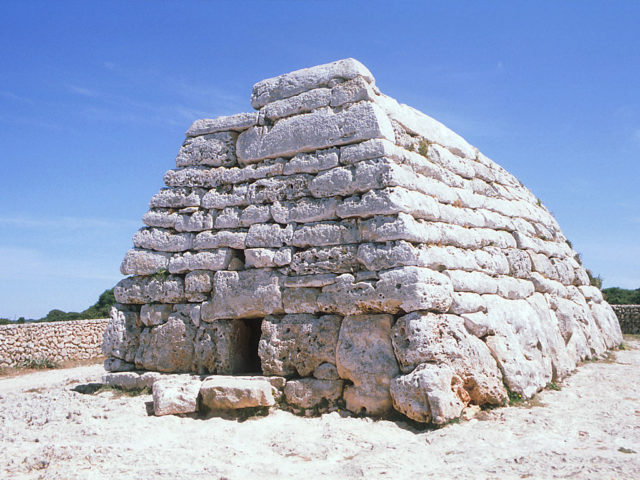
Navetas were first given their name by the rather imaginative Dr. Juan Ramis (1818) from their resemblance to upturned boats.
Indeed, the shape of the Naveta d’Es Tudons is that of a boat upside down, with the stern as its trapezoidal façade and the bow as its rounded apse. The ground plan is an overly elongated semicircle or a stretched horseshoe.
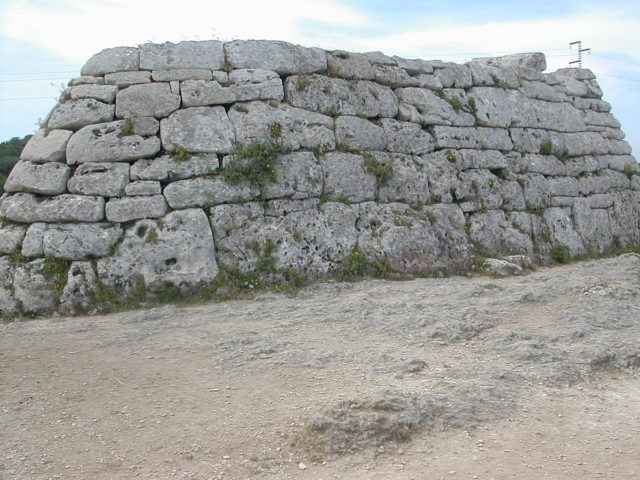
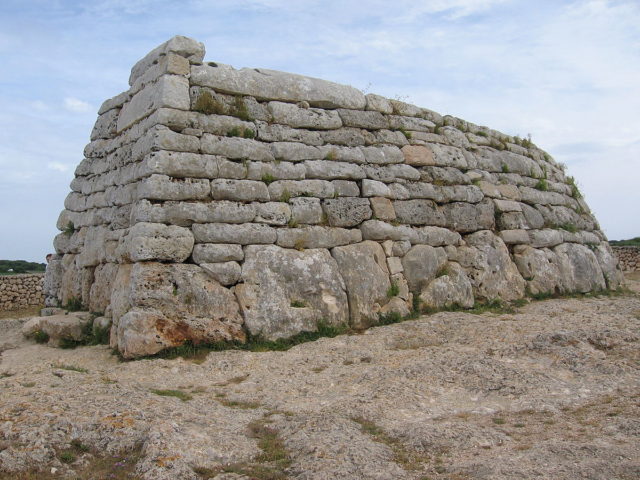
The tradition of the Naveta dels Tudons and the Pou de sa Barrina (the well of the driller) is one of the most interesting of all the Menorcan traditions associated with prehistoric sites. A modern tragic lore tells that two giants were competing for the love of a girl.
One would build a structure in the shape of an upturned boat (naveta) on the plain at Es Tudons, and the other would drill a well nearby until he struck water. The first to complete his task would marry the girl.
When the giant building the boat structure was on his way with the last stone, the other struck water. In a fit of savage jealousy, the builder of the naveta threw his last stone into the well, killing his rival. Then, feeling remorse, he killed himself.
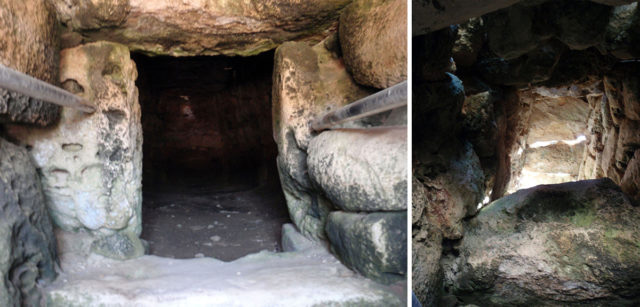
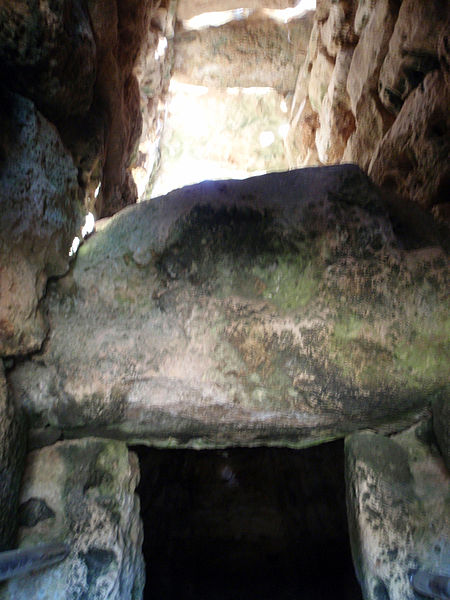
It was described for the first time in the early 19th century but was left unexcavated until 1959. When it was excavated by archaeologist Lluís Pericot García, it was found to contain the remains of at least 100 skeletons and various objects like bronze bracelets or bone and ceramic buttons.
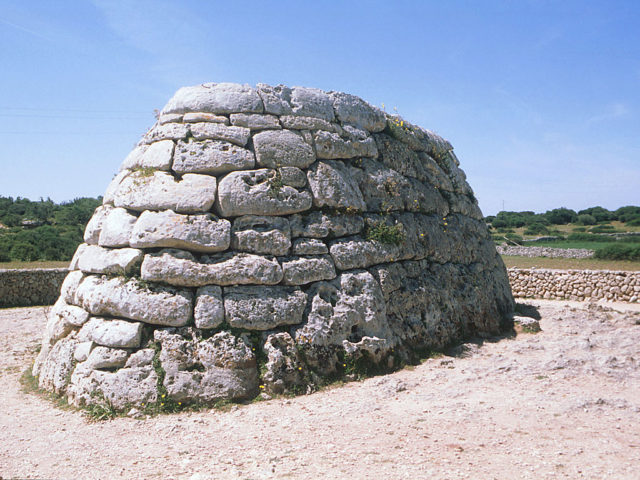
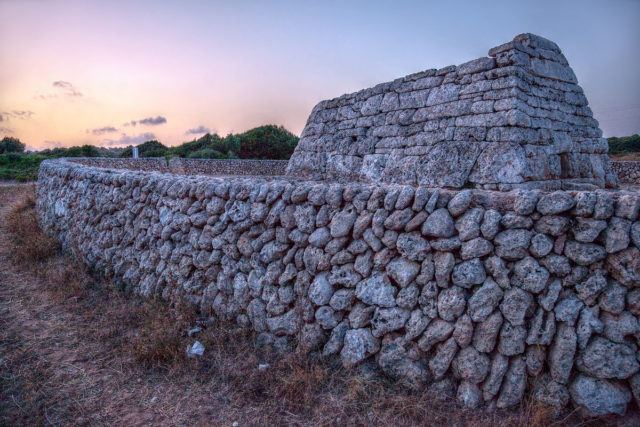
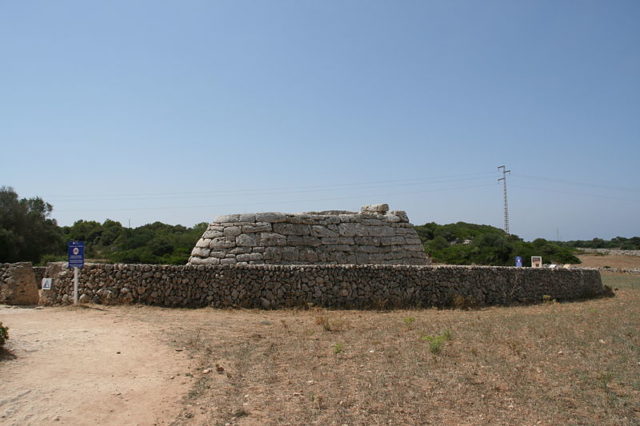
The lower chamber was for stashing the disarticulated bones of the dead after the flesh had been removed, while the upper chamber was presumably for drying recently placed corpses.
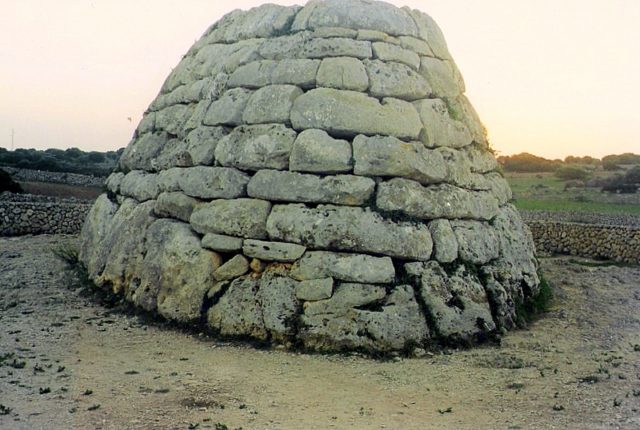
Radiocarbon dating of the bones found in the different funerary navetas in Menorca indicate a usage period between about 1130-820 BC, but the navetas like the Naveta d’Es Tudons are probably older.
